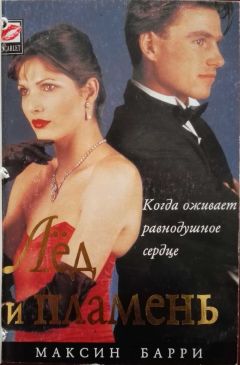184
A. R. Luria, The Working Brain: An Introduction to Neuropsychology (New York: Basic Books, 1973).
185
A. Bregman, Auditory Scene Analysis: The Perceptual Organization of Sound (Cambridge, MA: MIT Press, 1990).
186
Schnupp, Nelken, and King, Auditory Neuroscience; Bregman, Auditory Scene Analysis.
187
M. Ahissar et al., “Reverse Hierarchies and Sensory Learning,” Philosophical Transactions of the Royal Society B 364 (2009): 285–299; M. Nahun, Nelken, and M. Ahissar, “Stimulus Uncertainty and Perceptual Learning: Similar Principles Govern Auditory and Visual Learning,” Vision Research 50 (2010): 391–401.
188
Другие люди, впервые получившие кохлеарный имплантат, также отмечали новые для них звуки – вой ветра, хруст чипсов или звуки, с которыми предметы падают на пол. B. Biderman, Wired for Sound: A Journey into Hearing, rev. ed. (Toronto: Journey into Hearing Press, 2016); A. Romoff, Hear Again: Back to Life with a Cochlear Implant (New York: League for the Hard of Hearing, 1999).
189
A. Storr, Music and the Mind (New York: Free Press, 1992).
190
M. W. Kraus, “Voice-Only Communication Enhances Empathic Accuracy,” American Psychologist 72 (2017): 644–654; J. Zaki, N. Bolger, and K. Ochsner, “Unpacking the Informational Bases of Empathic Accuracy,” Emotion 9 (2009): 478–487.
191
M. D. Pell et al., “Preferential Decoding of Emotion from Human Non-linguistic Vocalizations Versus Speech Prosody,” Biological Psychology 111 (2015): 14–25.
192
S. Horowitz, The Universal Sense: How Hearing Shapes the Mind (New York: Bloomsbury, 2013).
193
S. Manninen et al., “Social Laughter Triggers Endogenous Opioid Release in Humans,” Journal of Neuroscience 37 (2017): 6125–6131.
194
G. Concina et al., “The Auditory Cortex and the Emotional Valence of Sounds,” Neuroscience and Biobehavioral Reviews 98 (2019): 256–264.
195
J. Schnupp, I. Nelken, and A. J. King, Auditory Neuroscience: Making Sense of Sound (Cambridge, MA: MIT Press, 2012).
196
A. Romoff, Hear Again: Back to Life with a Cochlear Implant (New York: League for the Hard of Hearing, 1999).
197
Schnupp, Nelken, and King, Auditory Neuroscience.
198
Romoff, Hear Again.
199
J. J. Gibson, The Ecological Approach to Visual Perception (Hillsdale, NJ: Lawrence Erlbaum Associates, Publishers, 1986).
200
D. Wright, Deafness: An Autobiography (New York: Harper Perennial, 1993).
201
M. Chorost, Rebuilt: How Becoming Part Computer Made Me More Human (New York: Houghton Mifflin, 2005), 90–91.
202
Wright, Deafness.
203
W. T. Gallwey, The Inner Game of Tennis: The Classic Guide to the Mental State of Peak Performance (New York: Random House, 1997).
204
T. J. Rogers, B. L. Alderman, and D. M. Landers, “Effects of Life-Event Stress and Hardiness on Peripheral Vision in a Real-Life Stress Situation,” Behavioral Medicine 29 (2003): 21–26.
205
Romoff, Hear Again.
206
L. Vygotsky, Thought and Language (Cambridge, MA: MIT Press, 1986).
207
D. Wright, Deafness: An Autobiography (New York: Harper Perennial, 1993).
208
R. Arnheim, Visual Thinking (Berkeley: University of California Press, 1969).
209
B. Tversky, Mind in Motion: How Action Shapes Thought (New York: Basic Books, 2019).
210
M. Schafer and D. Schiller, “In Search of the Brain’s Social Road Maps,” Scientific American 322 (2020): 30–35.
211
S. Pinker, The Language Instinct: How the Mind Creates Language (New York: William Morrow and Company, Inc., 1994).
212
A. Aciman, “Are You Listening?” New Yorker, March 17, 2014.
213
D. Wright, Deafness: An Autobiography (New York: Harper Perennial, 1993).
214
E. Glennie, Good Vibrations (London: Hutchinson, 1990).
215
D. Bendor and X. Wang, “Cortical Representations of Pitch in Monkeys and Humans,” Current Opinion in Neurobiology 16 (2006): 391–399; R. J. Zatorre, “Finding the Missing Fundamental,” Nature 436 (2005): 1093–1094.
216
W. R. Drennan et al., “Clinical Evaluation of Music Perception, Appraisal and Experience in Cochlear Implant Users,” International Journal of Audiology 54 (2015): 114–123; J. Schnupp, I. Nelken, and A. J. King, Auditory Neuroscience: Making Sense of Sound (Cambridge, MA: MIT Press, 2012); C. M. Sucher and H. J. McDermott, “Pitch Ranking of Complex Tones by Normally Hearing Subjects and Cochlear Implant Users,” Hearing Research 230 (2007): 80–87.
217
K. Gfeller et al., “A Preliminary Report of Music-Based Training for Adult Cochlear Implant Users: Rationales and Development,” Cochlear Implants International 16, no. S3 (2015): S22–S31.
218
B. Biderman, Wired for Sound: A Journey into Hearing, rev. ed. (Toronto: Journey into Hearing Press, 2016); M. Chorost, “My Bionic Quest for Bolero,” Wired, November 1, 2005, https://www.wir ed.com/2005/11/bolero; Drennan et al., “Clinical Evaluation of Music Perception”; R. Wallace, Hearing Beethoven: A Story of Musical Loss and Discovery (Chicago: University of Chicago Press, 2019).
219
A. Romoff, Hear Again: Back to Life with a Cochlear Implant (New York: League for the Hard of Hearing, 1999).
220
E. C. Cherry, “Some Experiments on the Recognition of Speech, with One and with Two Ears,” Journal of the Acoustical Society of America 25 (1953): 975–979.
221
A. W. Bronkhorst, “The Cocktail-Party Problem Revisited: Early Processing and Selection of Multi-talker Speech,” Attention, Perception & Psychophysics 77 (2015): 1465–1487.
222
J. O. O’Sullivan et al., “Hierarchical Encoding of Attended Auditory Objects in Multi-talker Speech Perception,” Neuron 104 (2019): 1–15.





